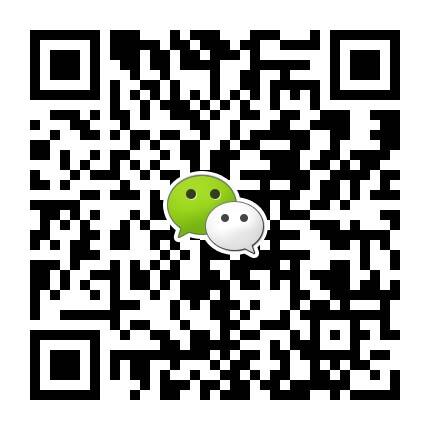Research on Internationalization Risk Control and Collaboration of China's Textile Industry under 'One Belt One Road'
In recent years, the recovery of the world economy has been slow and tortuous, the global industrial factors are facing a new pattern of adjustments, and China's textile and apparel industry is facing greater double competitive pressure. On the one hand, developed countries implement a 're-industrialization' strategy to strengthen their leading position in the high-end areas of the value chain; on the other hand, developing countries or regions dominated by Southeast Asian and South Asian countries and regions are becoming the traditional cost of China’s textile industry. Advantageous competitors (China’s textile industry has continued to increase the cost of production factors, the average annual growth rate of per capita wages has exceeded 10%, the wage level is much higher than that of neighboring countries, cotton prices have been higher than the international market by more than 30% for 3 years, and energy prices have risen. The industry’s international competitive cost advantage is no longer [1]). The current Chinese textile industry presents four new development characteristics: the total growth rate has slowed significantly, the structural adjustment has gradually deepened, the operation quality and efficiency are stable and improving, and the transformation and upgrading are still urgent [1], reflecting the rising cost and resource and environmental constraints Increasing challenges brought by various external pressures. However, economic globalization and regional economic integration are still important development trends, and international regional economic and trade cooperation is advancing in depth, and my country takes this to propose the 'Belt and Road' initiative. The “Belt and Road” refers to the Silk Road Economic Belt and the 21st Century Maritime Silk Road respectively. The total population along the route is about 4.4 billion people, and the total economic volume is about 21 trillion US dollars, accounting for about 63% and 29% of the world respectively [2]. The initiative aims to achieve common interests, with a community composed of multiple countries in Asia, Europe and Africa as the main body, with the principles of “consultation, co-construction, sharing” and “cooperation and win-win”. The content is based on interconnection and interoperability. International cooperation is at the core, and cooperation and complementarity among Asian countries are strengthened to promote economic development and recovery, and realize common modernization. By the end of 2014, my country's textile industry had more than 2,600 overseas production, trade, Ru0026D and design enterprises, distributed in more than 100 countries and regions [3], and cross-border mergers and acquisitions of raw materials and brands in the upstream of the industry were also increasing. As an important member of the global textile industry system, China's textile industry strives to adapt to the 'new normal' of the world and China's economy, and achieve coordinated and integrated development with the global industry, so as to promote transformation and upgrading is an inevitable requirement for industrial development [1]. Therefore, with the help of the 'Belt and Road' initiative, speeding up cross-border deployment, integrating international resources, and promoting overseas investment will help China's textile industry to make new breakthroughs in the global value chain. 1 New opportunities for the internationalization of China’s textile industry. The “One Belt One Road” initiative is the integration and upgrading of international cooperation such as the Shanghai Cooperation Organization, the Eurasian Economic Union, China-ASEAN (10 + 1), and China-Japan-Korea Free Trade Area. It is also my country’s exercise of geopolitics. Advantages, an important platform to promote multilateral cross-border trade, exchanges and cooperation [4]. The “Belt and Road” initiative talks about cooperation under the framework of equal cultural identity, embodying the spirit of peace, exchange, understanding, tolerance, cooperation, and win-win [4]. It upholds the principles of openness, tolerance, and harmony. Funds, popular support and other 'five links' are making a big fuss, seeking common development, mutual benefit and win-win. Therefore, more than 60 countries and international organizations have responded and participated in the past year. The 'Belt and Road' interconnection project will promote the docking and coupling of the development strategies of countries along the route, explore the potential of the regional market, promote investment and consumption, and create demand and employment [5]. Among them, Southeast Asia and South Asia countries and regions are exactly Competitors of China's textile industry, this gives China's textile industry a rare opportunity, new space and new way out for cooperation in the face of international industrial transfer. The repositioning of the textile industry in the '13th Five-Year Plan' of the textile industry includes: people's livelihood and pillar industries for national economic and social development, promotion of cultural creativity and lifestyle-leading fashion and consumer industries, high-tech applications, international development and business models Innovative leading industries [6], it can be seen that the road to international development is imperative. The United Nations Conference on Trade and Development’s '2013 World Investment Report' pointed out that global value chains have made a great contribution to development. In developing countries, value-added trade accounts for 30% of the country’s GDP. It also contributes to technology dissemination, skill training, and industrial upgrading. Created a lot of opportunities [7].
GESTER International Co.,Limited works very hard to understand your objectives, then create a program that can help you meet them.
For more information on this topic and others, please visit GESTER Instruments. We are among the top manufacturers of textile testing equipment tensile tester manufacturers in China, and we serve big names in textile testing equipment industry. You can rely on us for our high quality . Send your enquiry!
textile testing equipment is sold in oversees market and has high reputation. Besides, our products are sold with reasonable prices.
Quick links

